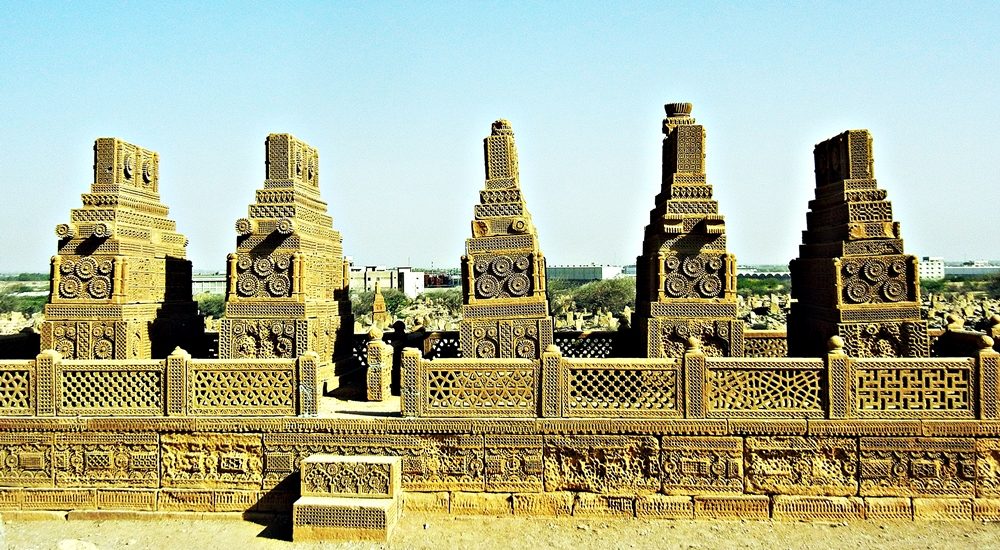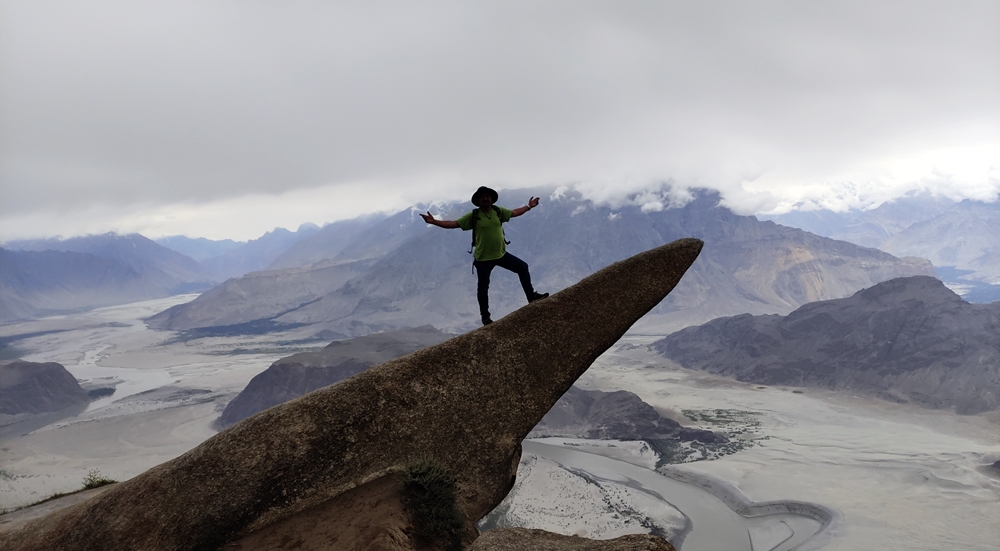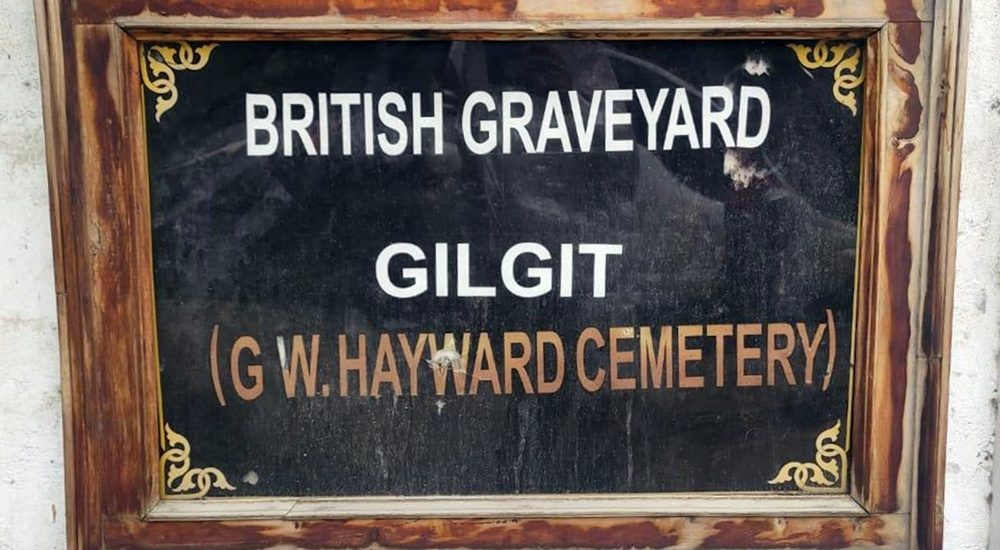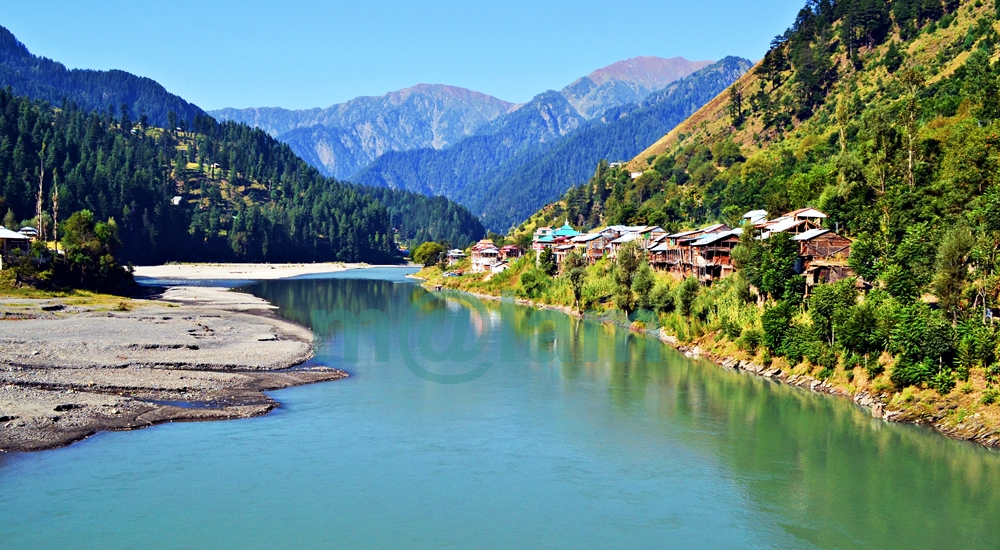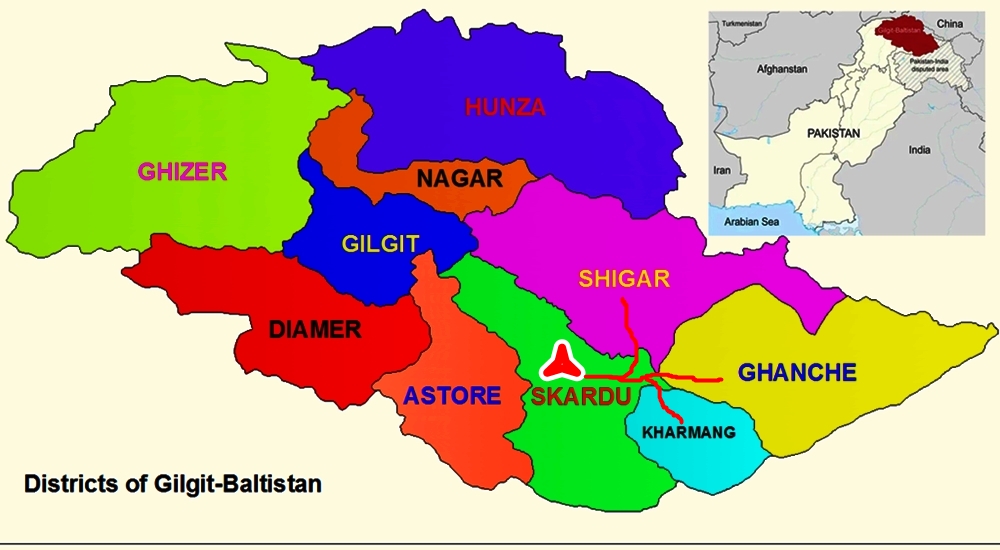Originally a coastal village inhabited by fishermen along the southern Arabian Sea, Karachi has evolved into Pakistan’s economic epicenter. Boasting both historical and modern allure, it stands as the country’s largest and most populous city. Karachi encompasses a vast spectrum—from its picturesque urban panorama and lively lifestyle to its somber historical events. The city of lights never ceases to amaze those embarking on exploration. Beyond the myriad tourist sites within the city, there lie captivating destinations to the north and west that make for convenient day trips. Here are some prime choices for excursions from Karachi.
The Chaukhandi tombs

Located approximately 30 kilometers from Karachi, the Chaukhandi Tombs constitute an early Islamic burial ground. Renowned for their intricate sandstone carvings, these tombs share a stylistic resemblance with the ornate tombs found at the Makli Necropolis near Thatta. Reflecting the funerary architectural style characteristic of lower Sindh, the Chaukhandi Tombs offer a captivating glimpse into the historical and artistic heritage of the region.
The ruins of Banbhore or Bhambore
Banbhore, a prehistoric port city and archaeological site situated approximately 65 kilometers east of Karachi along Gharo Creek’s north bank, reveals a historical narrative spanning from the 1st century BC to the 13th century AD. Occupied by the Scytho-Parthians from the 1st century BC to the 2nd century AD, it then transitioned into the Hindu-Buddhist era from the 2nd to the 8th century AD. The Muslim period, lasting from the 8th to the 13th century, saw Banbhore abandoned due to a change in the course of the River Indus. Presently, Banbhore is a mound hosting remnants of an ancient city, featuring notable structures such as the earliest known mosque from 727 AD, a deep well, and others. Arab General Muhammad Bin Qasim made his historic entry into the Indian subcontinent through Banbhore in 712 AD, and the site has yielded distinctive artifacts, some displayed at the Banbhore Museum.
Makli Necropolis

Situated approximately 98 kilometers east of Karachi, in the Thatta district, Makli is a massive Muslim necropolis boasting a rich blend of historical monuments. It ranks among the world’s largest graveyards, covering an expansive area of 10 square kilometers. This burial ground bears witness to the splendid Sindhi culture spanning the 14th to the 18th centuries, with over half a million monuments scattered throughout its expanse. Laid out in a diamond-shaped layout, Makli is the final resting place for individuals from diverse backgrounds, including kings and queens, scholars and soldiers, philosophers, governors, saints, and commoners. The site features tombs, graves, and mausoleums, forming a captivating panorama of the varied lives that once contributed to the region’s cultural richness. Recognized for its historical significance, Makli was designated as a UNESCO World Heritage Site in 1981.
Haleji Lake
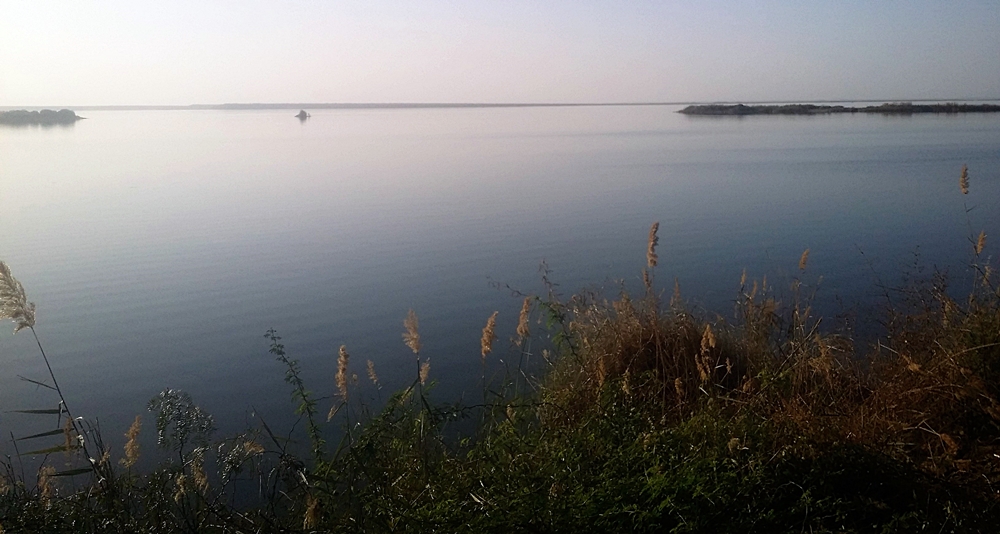
Located 91 kilometers from Karachi in the Thatta district of Sindh, Haleji Lake offers an engaging day trip, allowing visitors to explore not only the lake itself but also other attractions in Thatta city. Recognized as Asia’s largest bird sanctuary, the lake serves as a winter haven for thousands of migratory birds from Siberia. Hosting a diverse avian population, Haleji Lake is home to 223 bird species, encompassing coots, ducks, purple moorhens, kingfishers, pigeons, white herons, teals, waders, mallards, pelicans, cormorants, egrets, black-headed-gulls, pheasants, partridges, and storks. The lake is a paradise for bird watchers, with waterfowl being a highlight. In addition to the rich birdlife, Haleji Lake also boasts other species, including the presence of marsh crocodiles.
Keenjhar Lake
Keenjhar Lake, located 122 kilometers from Karachi and 22 kilometers from Thatta, is Pakistan’s second-largest freshwater lake, built in the 12th century as a water reservoir for Thatta. The azure waters and vibrant natural surroundings make it a vital wildlife sanctuary, hosting diverse bird species like ducks, geese, flamingos, and herons, while also serving as a breeding ground for notable birds. Beyond its ecological importance, the lake is culturally significant, linked to the Sindhi folklore of Noori-Jam Tamachi, where the raised tomb at the center is believed to be that of Noori, the Fisher girl, who married Jam Tamachi, the ruler of Sindh.
Shah Jahan Mosque or Jamia Masjid Thatta
Commissioned by Mughal King Shah Jahan (1644-47) as a gesture of gratitude to the people of Thatta, the Shah Jahan Mosque, also known as Jamia Masjid Thatta, stands as an enduring architectural marvel. Built with red brick and adorned with blue glazed tiles, it deviates from traditional Mughal design by lacking frescoes and featuring a distinctive roof with 93 domes instead of minarets. The architectural style combines Sindhi, Persian, Timurid, and Indian influences. The mosque boasts an interesting acoustic phenomenon, with the voice of the Mehrab resonating effortlessly throughout. The absence of additional acoustic aids is notable. The veranda ceilings are engineered for optimal airflow, ensuring a cool environment. Despite undergoing repairs, the mosque retains its historical and architectural significance, earning a spot on the UNESCO World Heritage List in 1993.
Manora Island
Manora is a compact island spanning 2.5 square kilometers, renowned as a popular picnic destination perfect for a day trip from Karachi. Accessible through a brief 30-minute ferry ride from Keamari Harbour, the gateway to Karachi’s bustling port, the island offers a distinctive experience with its expansive sandy beaches along the southern perimeter and refreshing sea breezes. Historically, Manora has significance as the site where the Talpur rulers surrendered to the British, leading to the construction of a still-standing lighthouse. Notably, it is believed that Alexander the Great camped on the island after his Indus Valley campaign on his journey to Babylonia. Manora continues to attract visitors seeking a tranquil escape and a glimpse into its rich history. Visitors often bring their own provisions and revel in a day away from the city’s hustle and bustle.
Churna Island
Churna Island stands as an optimal destination for water enthusiasts, offering a variety of water sports such as scuba diving, jet-skiing, banana boating, wake tubing, cliff jumping, snorkeling, and other aquatic activities. Positioned as a small rock reef in the Arabian Sea, it is enveloped by captivating marine life and coral gardens, making it particularly popular among families and children. This idyllic paradise serves as an excellent option for a day trip from Karachi, conveniently situated approximately an hour’s drive from Mubarak Village.
Mubarak Village/Beach
Mubarak Village, located near Karachi in Kiamari Township, is a charming fishing village situated approximately 1.5 hours drive from the city center. Positioned on the scenic beach that shares its name, the village is surrounded by rocky hills. Functioning as a natural harbor, the calm waters of Mubarak Village offer an ideal anchoring spot for fishermen to moor their boats. The radiant blue hues of the sea and the glistening golden-brown sands make this locale a delightful retreat from the urban greyness of the city. Additionally, seafood can be prepared on the beach by the villagers upon request, providing visitors with a unique culinary experience by the shore.
Kund Malir Beach
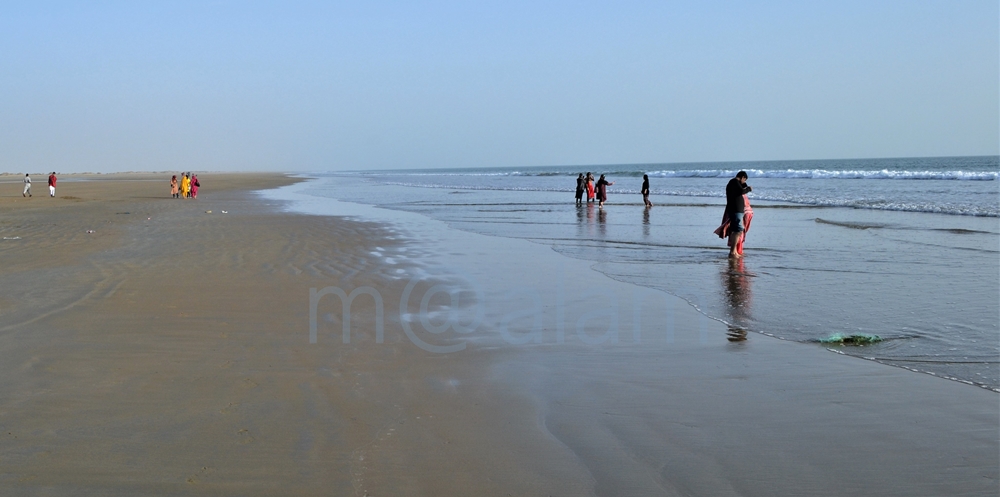
The tranquil Kund Malir is located within Balochistan’s Hingol National Park along the Makran Coastal Highway. Accessible at a distance of 250 kilometers, it serves as an ideal day trip from Karachi, with an estimated travel time of approximately 4 hours each way. With its shallow expanse of golden sand, Kund Malir provides tourists with stunning vistas and recreational possibilities. Exploring this beach offers an opportunity to witness some of the wonders along the highway and within Hingol National Park, such as the Princess of Hope and the Sphinx. Recognized among Asia’s top 50 beaches, it is important to note that limited facilities are available for food, fuel, and network connectivity after the Zero Point. To reach Kund Malir from Karachi, take the RCD highway towards N25 and continue on N10, following the Makran Coastal Highway.
Ranikot Fort
Known as the “Great Wall of Sindh,” the Ranikot Fort is situated in the Jamshoro district of the Sindh province in Pakistan. Positioned atop the Lakki Mountains, this world-class tourist attraction is reachable within approximately 2 hours from Hyderabad (123 km) and 3.5 hours from Karachi (270 km). Erected in the 17th century, the expansive fort boasts formidable walls constructed on natural cliffs and mountains, covering a span of approximately 29 kilometers. Linking various peaks of the Kirthar range, the Ranikot Fort encompasses two fortresses named “Meeri” and “Shergarth.” Built from stone and lime mortar, the original architects and purpose behind its construction remain shrouded in mystery. The fort features four entry gates, with one touched by the Sann River. Given the undeveloped and deserted surroundings, visitors are advised to bring their own food when exploring this remarkable historical site.
Kirthar National Park
Established in 1974, the Kirthar National Park is located in the Kirthar Mountain Range in the Sindh district. Encompassing 3,087 square kilometers, it is the second-largest national park in Pakistan, following the Hingol National Park in Balochistan. Accessible within a 3-hour drive from Karachi via a 4-wheel drive, the park offers an exhilarating experience for desert driving enthusiasts. The park boasts several elevated vantage points, providing breathtaking views and excellent opportunities for hiking and trekking. Historically home to wild predators like wolves, Indian leopards, and striped hyenas, which are now nearing extinction, the park currently hosts wildlife such as Chinkara gazelles, Sindh wild goats, urials, and badgers. Additionally, rare Blackbuck antelopes are kept in enclosures for reintroduction efforts. The wildlife department provides rest houses for overnight stays and designated BBQ areas for food enthusiasts. Visitors are advised to bring their food items and water for the trip.
Gadani Beach and Ship Breaking Yard
The Gadani shipwreck stands as one of the largest shipwrecks in South Asia, conveniently located just an hour’s drive from the city, making it an ideal spot for Karachi tours. Although a shipwreck may not initially seem like an interesting destination, Gadani offers spectacular sunset views. A limited section of Gadani Beach is open to the public when significant shipbreaking activities are not taking place. It is surrounded by limestone cliffs and provides a stunning backdrop for witnessing some of the best sunsets in all of Pakistan. While weekends can bring a crowd, those who linger around after sunset often find themselves with the entire beach to enjoy, as the sky transforms into a vibrant red hue. The Gadani shipwreck, with its unique atmosphere, offers a captivating experience for those seeking a distinctive and picturesque setting.
Cave City (Godrani)
Balochistan has Cave City, known locally as Godrani located a three-hour drive from Karachi. True to its name, this uninhabited city features numerous small and large caves carved into the Limestone Mountains scattered throughout the area. The exact count of these caves and their historical origins remains elusive. While some historians suggest that the caves served as a Buddhist Monastery in the 7th century, predating the presence of Islam in South Asia, local myths propose a different narrative. According to these myths, the caves are attributed to a revered lady named Godrani, and her shrine still stands within the Cave City. Regardless of the precise history behind the formation of the cave city, it unquestionably stands out as a unique and intriguing destination to explore in Balochistan.



